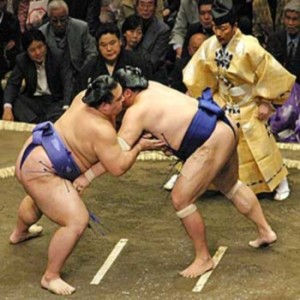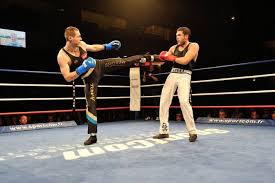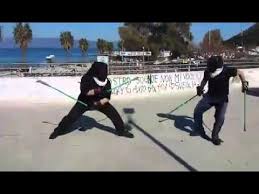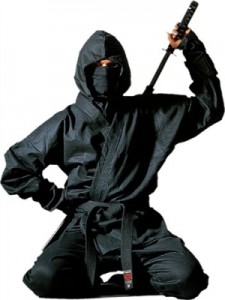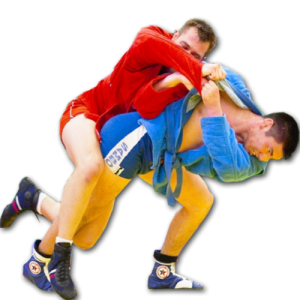Karate
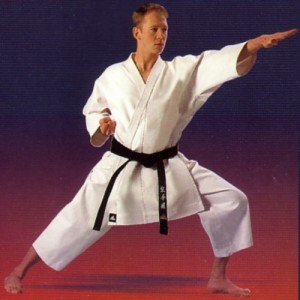 Karate – Japanese martial arts, which came to the country from the island of Okinawa, which, most likely, came from China with immigrants. Initially, the island was an independent state of Ryukyu, which in the 17th century was captured by Japanese invaders. It is believed that for the sake of guerrilla warfare, the inhabitants of the island created karate.
Karate – Japanese martial arts, which came to the country from the island of Okinawa, which, most likely, came from China with immigrants. Initially, the island was an independent state of Ryukyu, which in the 17th century was captured by Japanese invaders. It is believed that for the sake of guerrilla warfare, the inhabitants of the island created karate.
At the end of the 19th century, when Okinawa was just one of the prefectures of the Japanese Empire, during the selection of young men for military service, doctors noticed that the conscripts from this island who were engaged in local martial arts, were in great physical shape. This martial art was subsequently included in the school curriculum. Studying at a comprehensive school added the totality of popularity, but began to turn martial arts into military gymnastics.
In the 20th century, due to the economic downturn, many Okinawa residents moved to the main islands of Japan, bringing karate with them. But this martial art began to enjoy popularity only after the victory of a karate master over a Western boxer, which was then written in the press. The Japanese began to study this martial art, but in its physical form, as more common.
In karate, styles, directions and schools are distinguished. There are 3 directions: sports, traditional and applied. There are much more styles. They began to arise from the time of the appearance of martial arts in Japan, from the 30s of the last century the following styles were registered:
Setokan karate is one of the most common styles created by karate teacher Funakoshi Gitin. This style is distinguished by linear movements and application of shock. The stands in the grid are low and wide, the blocks are rigid. Punches are carried out using the thigh. The basic principle is victory with one hit.
The most significant points in this martial art are:
1) the development of a good balance that trains practicing low racks;
2) rotational movement of the hips horizontally, in the direction or in the direction of the stroke, which enhances the strikes;
3) timely and instantaneous inclusion of all muscles at the end of a stroke or a sudden stop, due to which there is an impulse from a stroke or block, which extends deep into the lesion.
Goju-ryu is a karate style that combines both hard and soft techniques. This is one of the most common styles that exists in 3 variants – Okinawan, Japanese and American.
Goju-ryu incorporates the features of fairly rigid systems of Chinese Wushu, while retaining the art of real combat, it is highly effective. This style is based on the melee technique, so goju-ryu can be used in confined spaces, in crowds.
Vado-ryu – this style of Japanese karate-do was created in 1939 by Hironori Otsuka. The main difference between the style is the technique of warfare, which is largely similar to ju-jutsu. During the fight, the fighter tries to spend energy minimally, using more economical tricks, blocks. Features in blocking attacks are combined with constant maneuvers by which the fighting athlete takes himself out of the blow, leaving the possibility of a counterattack. In sparring fighters of this style there are many distracting maneuvers that force the enemy to move to a disadvantageous position.
Shito-ryu – this is one of the oldest styles created by Kenwa Mabuni. It comes closest to Okinawan styles. Shito-ryu takes an intermediate place between the setokan and goju-ryu, applying the principles of both techniques. This style is very fast, but at the same time full of strength and external attractiveness, it includes powerful, hard and soft, artistic kata of various styles.
The principles of the battle tactics of this style are as follows:
Quick sidetrack or reversal from enemy attacks.
Soft blocks, sending the enemy strike with a circular, deflecting protection.
Rigid blocks with sharp and maximum release of shock force.
The use of strikes towards, defense by attack.
Immediate entry into the impact space and the same exit to the safe area after striking.
Kyokushinkai karate In the 50s of the last century, Kyokushinkai appeared as a very tough contact style of karate. Showing everyone the power of karate, Kekushinkai gradually became very popular throughout the world and was himself chosen as the basis for creating new styles.
Its founder Masutatsu Oyama saw the goal of creating his style in the revival of karate as a martial art, separating the warrior’s education system from sports, according to the Bushido spirit.
For a relatively short life, kekushinkai karate has found its rightful place among martial arts, changing the training system of fighters. As a result of these changes, the Kyokushinkai style began to develop very quickly and achieved great success in sports.
This karate style is a very entertaining sport. Sports are held completely without protection. The only prohibition is blows to the head with hands. Such fights, with many high kicks and strong kicks, always gather full spectator halls for competitions.
